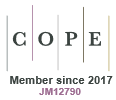Just Accepted
This article has been peer reviewed and accepted for publication. It is in production and has not been edited, so may differ from the final published form.
Insights into patterns of co-existence in urban reserves: home range size, movement and habitat use of two co-occurring congeneric gliding marsupials
Abstract
A central objective of urban ecology is to maximise biodiversity in urban reserves. However, this goal can be difficult to achieve when trying to conserve congeric species that overlap in resource use. The threatened squirrel glider (Petaurus norfolcensis) and non-threatened sugar glider (Petaurus breviceps) are gliding marsupials that can co-occur in eastern Australian forests. We used radio-tracking data to estimate home range sizes and obtain observations of habitat use to gain insights on how they can co-exist in urban reserves. Gliders were radio-tracked for 4-13 months between July 2020 and August 2022. The mean fixed kernel density home range for the squirrel glider was marginally larger (4.82 ha SE ± 1.53 ha; n= 5) compared to the sugar glider (3.29 ha SE ± 0.52 ha; n=6). The home ranges of one squirrel glider and one sugar glider overlapped in one patch of forested wetlands. These observations suggest that squirrel gliders and sugar gliders may co-exist in urban reserves provided there is enough space and resources for niche partitioning.
AM24051 Accepted 22 April 2025
© CSIRO 2025



